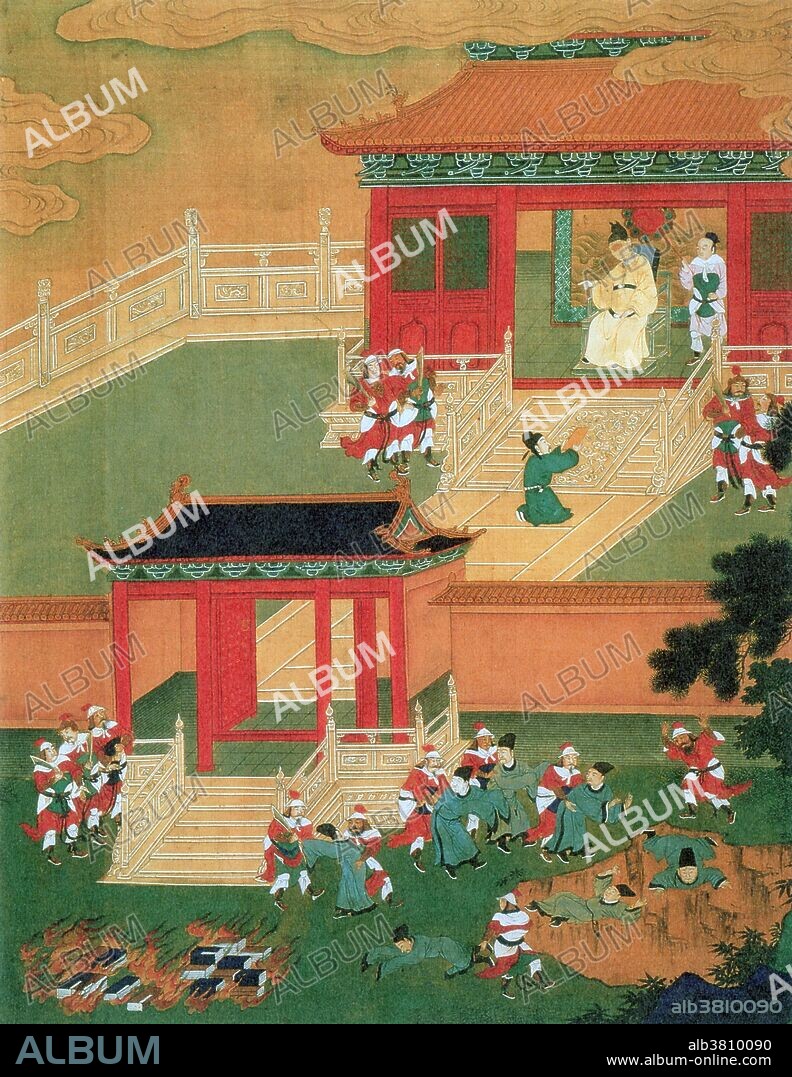alb3810090
Burning Books and Killing Scholars, Qin Dynasty

|
Zu einem anderen Lightbox hinzufügen |
|
Zu einem anderen Lightbox hinzufügen |



Haben Sie bereits ein Konto? Anmelden
Sie haben kein Konto? Registrieren
Dieses Bild kaufen.
Nutzung auswählen:

Titel:
Burning Books and Killing Scholars, Qin Dynasty
Untertitel:
Siehe automatische Übersetzung
Entitled: "Burning books and killing of Confucian scholars by order of Emperor." Qin Shi Huang (260 - 210 BC) was the founder of the Qin dynasty. He became China's first emperor when he was 38 after the Qin had conquered all of the other Warring States and unified all of China in 221 BC. During his reign, his generals greatly expanded the size of the Chinese state. Qin Shi Huang also worked with his minister Li Si to enact major economic and political reforms aimed at the standardization of the diverse practices of the earlier Chinese states. He is traditionally said to have banned and burned many books and executed scholars. His public works projects included the unification of diverse state walls into a single Great Wall of China and a massive new national road system, as well as the city-sized mausoleum guarded by the life-sized Terracotta Army. He ruled until his death in 210?BC after a futile search for an elixir of immortality.
Bildnachweis:
Album / Science Source / NYPL
Freigaben (Releases):
Model: Nein - Eigentum: Nein
Rechtefragen?
Rechtefragen?
Bildgröße:
3249 x 4200 px | 39.0 MB
Druckgröße:
27.5 x 35.6 cm | 10.8 x 14.0 in (300 dpi)
Schlüsselwörter:
 Pinterest
Pinterest Twitter
Twitter Facebook
Facebook Link kopieren
Link kopieren Email
Email
